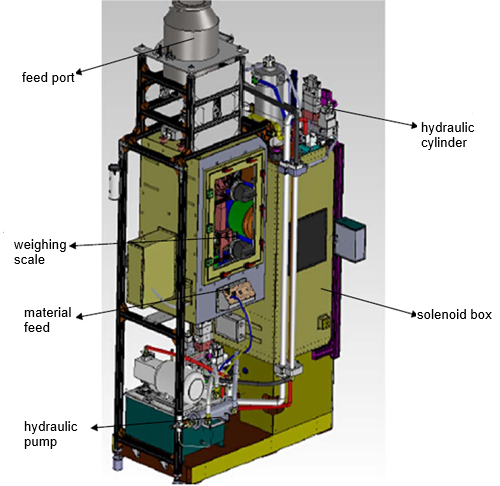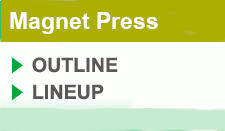Field Alignment

To guarantee the precision of our magnet presses we have adopted a hydraulic system with a dual compression / dual flow control design. All of the hydraulics are built into a unified chassis along with the press’s frame which gives the device a low center of gravity along with the added benefit of a compact footprint that saves factory floor space. Since dual compressions systems are simple and straightforward, we were able to minimize the number of complex parts and thereby increase the overall operational reliability.
Our precision compression method is based on a four-cylinder setup with two upper and two lower compression pistons. These cylinders are set into a frame with tight tolerances to hold the mold firmly in place while the external field is being applied. Once the magnetization has been completed, the hydraulics can then be toggled automatically to release the mold. This results in a single-step process that saves both on investment and labor costs.
All of our magnetic presses operate under precise numerical control provided by an integrated programmable logic controller (PLC). Users can access the PLC via a built-in touch screen interface. By providing this high degree of automation, our systems can reduce material waste during production which results in reduced resource costs and better sustainability.
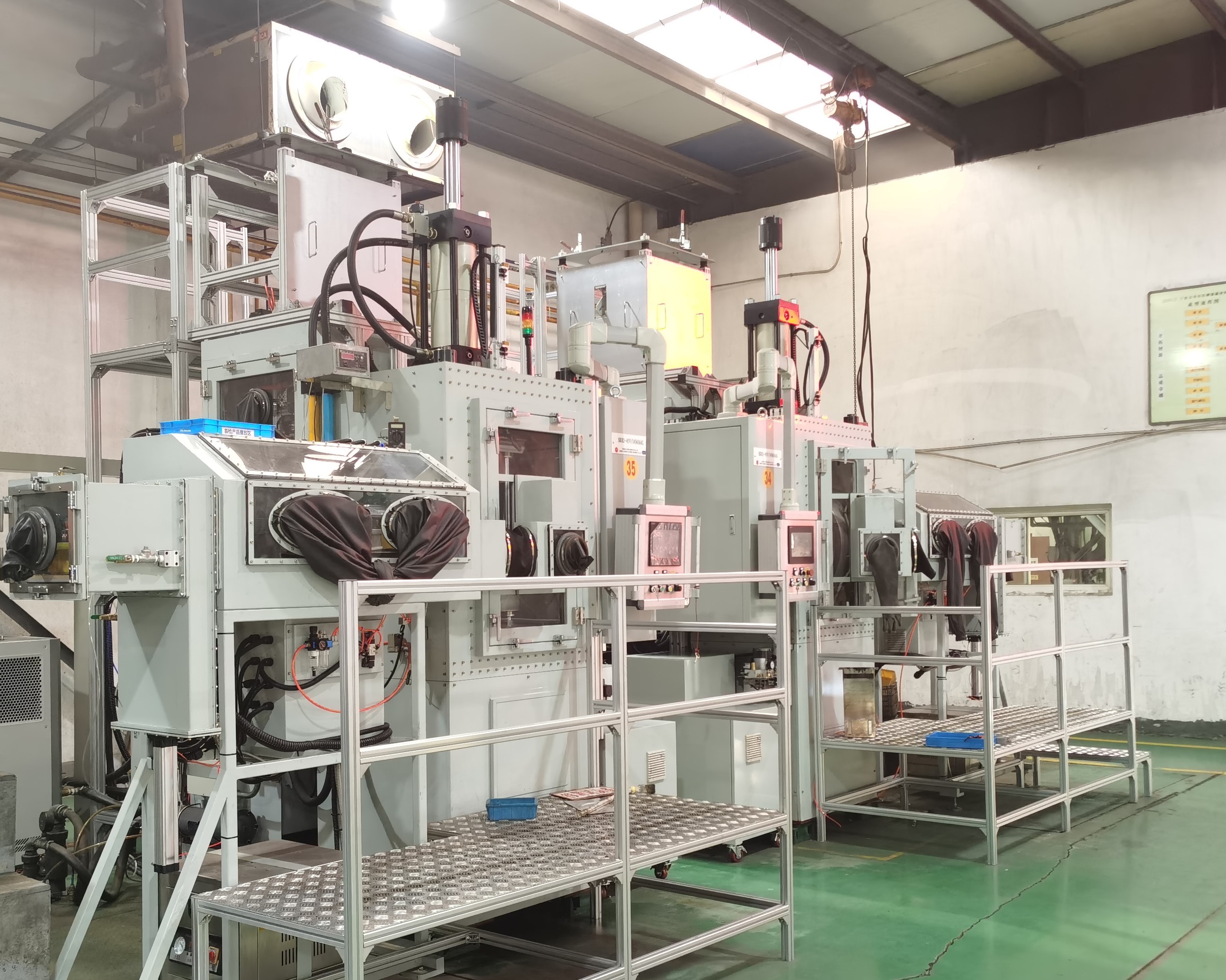
We have developed our fully automatic filling system to address customer concerns involving the weighing and manual feeding of magnetic material into the press. By automating this process, we were able to create a totally closed system where powder is weighed and fed right into molds without the need for any worker inputs. This ensures better consistency for each mold fill. Also, the fully enclosed production environment limits the risk of dust contamination to under 100 ppm, improving worker safety.
The feeding system consists of an electromagnetic oscillator which precisely controls the feed of the powder, an electronic scale which accurately weighs material, and a catch box which adds material evenly. This ensures that the gram weight of the added material is within the specified range and monitored automatically by the systems software.
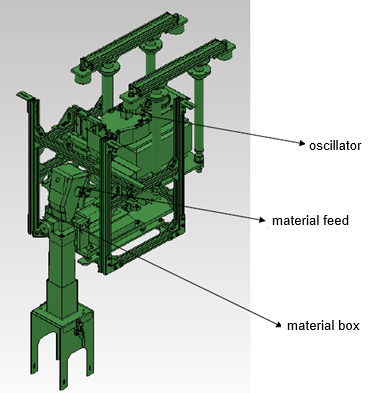
Automatic Material Outfeed and Stacking
Once the magnetization process has finished, a robotic system removes the magnet blocks from the top of the mold cavity and places them on a conveyor belt, transporting them to storage for stacking. This completes the closed loop process and ensures that quality is maintained.
Oxygen Control Technology (OCT)
While the permanent magnet motors segment of the electric vehicle market has been witnessing steady growth, low yield issues due to sintered magnet’s tendency to crack have proven to be a major obstacle. However, cracking can be reduced by leveraging material matching techniques at the grain boundaries. Ratios of 2:14:1 have been found to be optimal.
The price of rare earths has been rising. To manufacture high-performance S-NdFeB magnets at a low-cost, manufacturers need to keep the total content of rare earth (RE) elements under 31.5%. Here, the development of oxygen control technology (OCT) makes a major difference.
OCT makes magnetic materials become less susceptible to oxidation, resulting in more stable and consistent overall performance. This means your presses will be better able to produce blocks with good mechanical properties.
Radial and Multipolar Field Alignment
To align the internal magnetic poles, external fields may be applied by the press to the rare-earth powders while the blocks are being sintered. First the mold needs to be filled with the magnetic powder, set in the press, and then sealed to create a nitrogen environment. Next you may select from a variety of highly efficient magnetic circuits capable of generating magnetic fields in the required shapes that will be suitable to perform the desired alignment. These fields may be in the transverse, longitudinal, or radial directions.
We offer three types of presses that can magnetize magnets in different directions:
1) Transverse Direction Pressing (TDP)

2) Axial Direction Pressing (ADP)
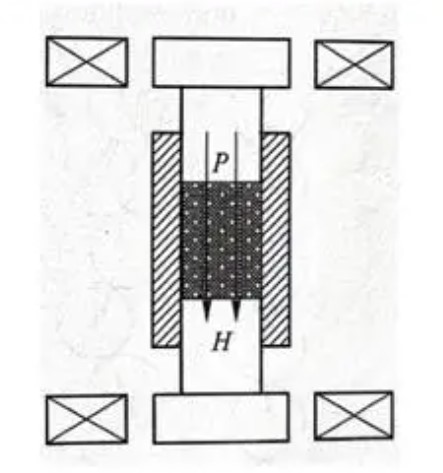
3) Radiative Direction Pressing (RDP)

